EMI: An Efficient Algorithm for Identifying Maximal Rigid Clusters in 3D Generic Graphs
IEEE/ACM TRANSACTIONS ON NETWORKING, VOL. 32, NO. 1, FEBRUARY 2024
Qianhan Wei, Yongcai Wang*, and Deying Li
School of Information, Renmin University of China, Beijing, 100872


Overview
Identifying the Maximal Rigid subGraphs (MRGs) whose relative formations cannot deform continuously in Rd, is a fundamental problem in network formation control and network localization. When
Motivation
The invalidity of Laman theorem in
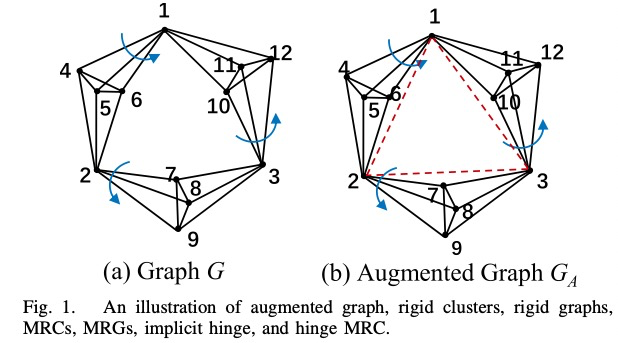
Contributions
A new understanding to the MRG detection problem in
We design a random number-based,
On the premise of knowing the information of the mutual rigid vertex pairs, and based on the property of MRCs in
Although all MRCs can be found by BMI, the efficiency is still not satisfied. For this reason, an efficient framework, i.e., EMI is proposed. EMI is composed by a Trimmed-BMI step and a Trim-FIX step. We prove EMI can detect MRCs as accurately as BMI and prove its time complexity is
Main Algorithms
We first consider the problem to identify mutually rigid vertex pairs in a given 3D generic graph.
Step1: we randomly generate a framework
Step2: For any vertex pair
We repeat Step1 and Step2 to generate several frameworks with different vertex positions and repeat the above process on each framework. For each vertex pair
BASIC MRC IDENTIFICATION (BMI), Based on the identified mutually rigid pairs, we propose a Basic MRC Identification (BMI) algorithm.
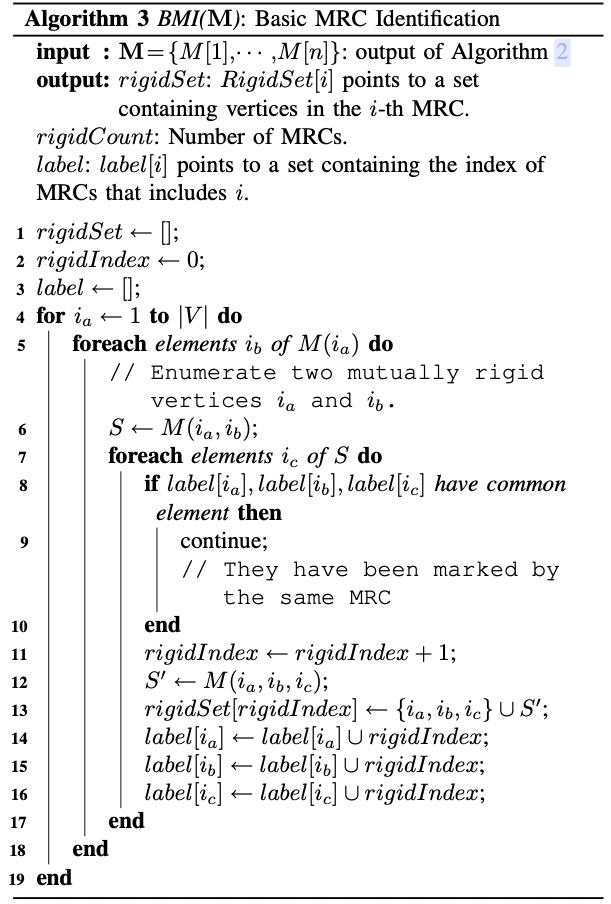
EFFICIENT MRC IDENTIFICATION: EMI
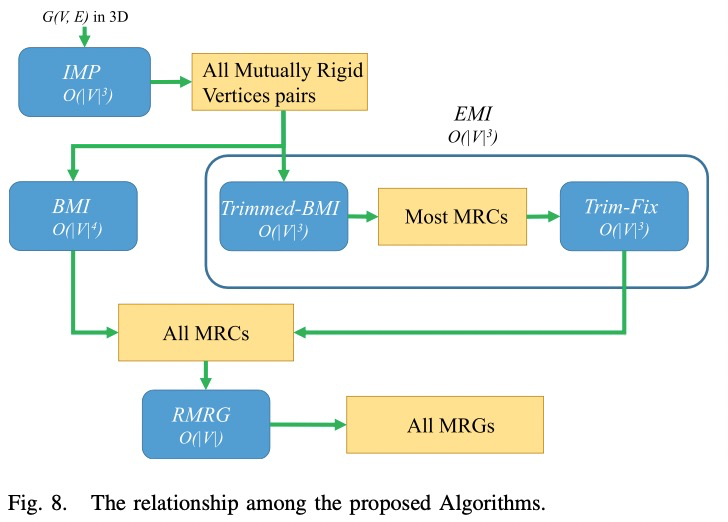
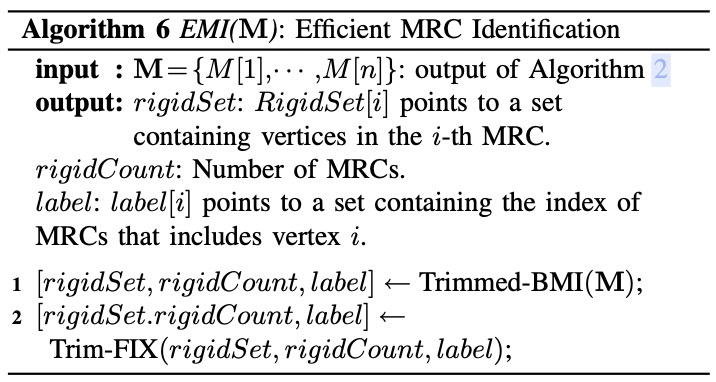
Evaluations
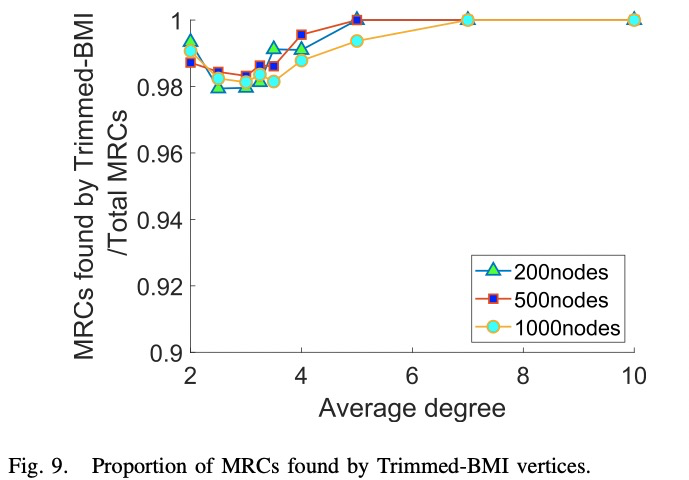
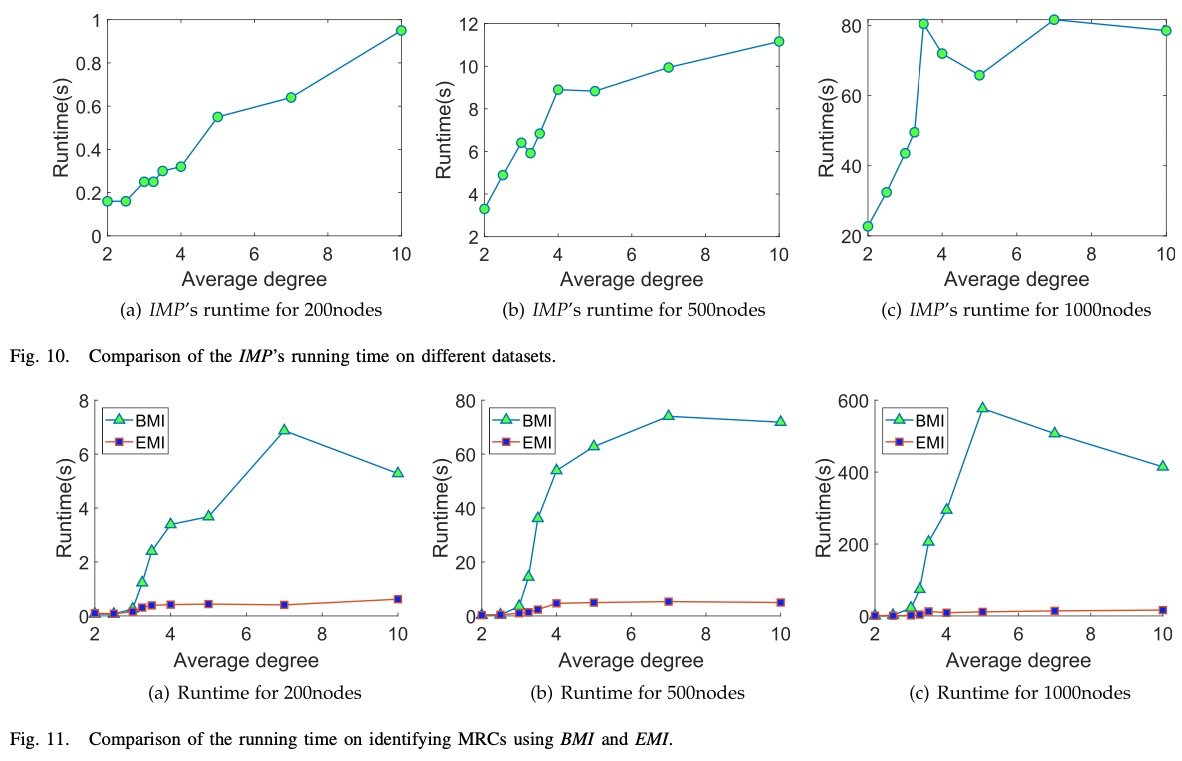
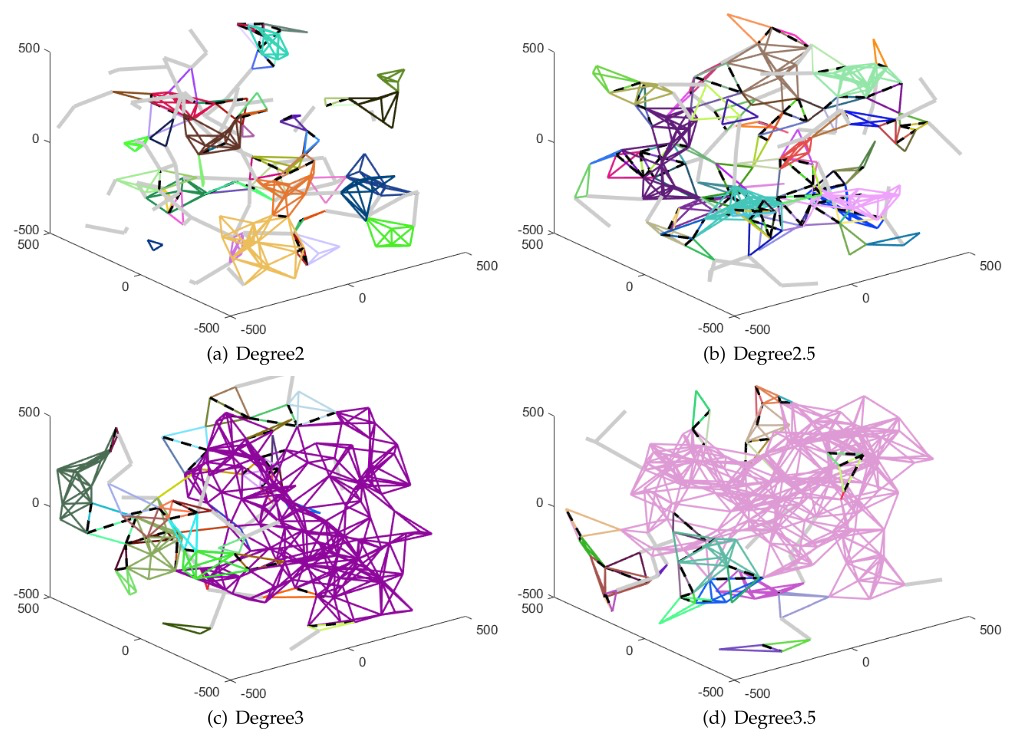
BibTex
x
1@ARTICLE{10168053,2 author={Wei, Qinhan and Wang, Yongcai and Li, Deying},3 journal={IEEE/ACM Transactions on Networking}, 4 title={EMI: An Efficient Algorithm for Identifying Maximal Rigid Clusters in 3D Generic Graphs}, 5 year={2024},6 volume={32},7 number={1},8 pages={460-474},9 keywords={Fasteners;Electromagnetic interference;Rigidity;Clustering algorithms;Location awareness;Three-dimensional displays;Time complexity;Maximum rigid cluster partition;3D networks;rigid cluster;implicit hinge;mutual rigid pair},10 doi={10.1109/TNET.2023.3287822}}11
Acknowledgment
This work was supported in part by the National Natural Science Foundation of China Grant 61972404 and Grant 12071478; in part by the Public Computing Cloud, Renmin University of China; and in part by the Blockchain Laboratory, Metaverse Research Center, Renmin University of China.